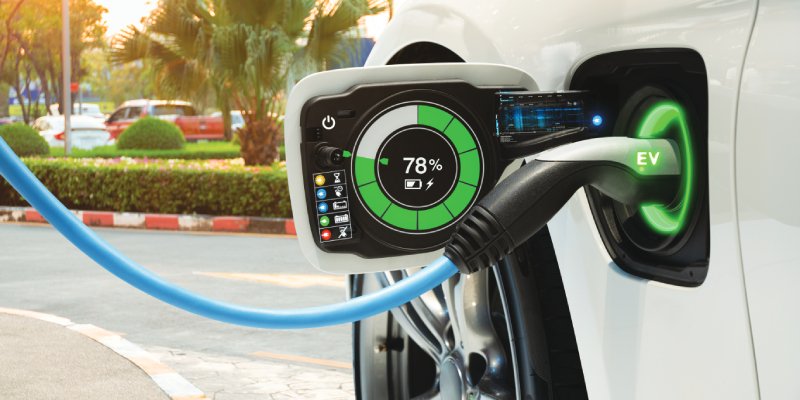Over the years, the number of vehicles has increased exponentially, which has been reflected in increased energy consumption, CO2 emissions and fossil fuel prices. When we consider the road map for EVs, we see how significant it is to move into cleaner technologies. At the session on “Taking India’s EV based sustainable Transport System to the next level” a panel of experts asked questions and found answers to put the current EV scenario in the right perspective

The transition of mobility into clean mobility and clean surface transport has been given much attention by the Central Government and its think tank organisation Niti Aayog. Major initiatives were taken to let all stakeholders right from two-wheeler component manufacturer, fleet operator and state government owned STUs to come on the same platform, discuss their roles and responsibility with each other and come out with major transition. Under FAME I, FAME II and PLI scheme, procurement of buses under various contract models have been made possible.
Addressing the panel on New National EV policy, Anil Srivastava, Director, Epsilon Advanced Materials and Visiting Professor, Centre for Energy Policy & Environment Solutions, IIT Kanpur, questioned, “How to take India’s EV based transport system to a sustainable level? Because any change requires the participation of all stakeholders. In terms of sustainability, the biggest stakeholder is the passenger. The Government, Industry, think tank, and academia also have a big role to play in determining sustainability and its direction.

For any policy or any transition there has to be a dynamic thinking towards the policy formulation”
–Anil Srivastava
Creating a sustainable transitional mobility system
What is it that is stopping the adoption of electric vehicles? Availability of the good quality product, the mindset and the choice of people form the biggest roadblock for the adoption of electric vehicles and particularly four-wheeler passenger vehicles. We have reached the tipping point for two wheelers & three wheelers. We are also fast approaching the tipping point in the case of passenger vehicles. The greatest achievement is that people are now buying four-wheeler passenger vehicles without considering subsidies.
There are many actions which need to be taken by the industry which is probably the third biggest including the operators, component manufacturers, battery manufacturers in the broad segment of the industry. But they have to look into the size of the Indian market which is moving faster than any other part of the world.
In 2010, the electric mobility mission plan began with a MNRE incentive scheme, funded by 98Cr, but the subsidy was exhausted within a few months. This led to a need for a mobility mission plan in 2012, based on which schemes like FAME I, FAME II were formulated. In the past, the government has been extremely clear about the transition from ICE-based vehicles to all-electric vehicles. However, there are three main concerns:
- Energy Security
- Manufacturing Import Dependence
- Carbon Emissions.
Abhijeet Sinha, National Program Director EODB & National Highways for EV stated, “Technology should be considered in how we intend to use it, whether it will be harmful or beneficial? It has impacted our lives in many ways; for example, electric mobility has brought a certain level of accountability along with it. When it comes to electric mobility, what we can implement are topics of discussion with a lot of room for technical improvement. So, when it comes to technology advancement, the government’s intent takes precedence before the content.”

Reforms not only change the way we do business but change the way it impacts the budget of multi-stakeholders.
–Abhijeet Sinha
The intentions are very clear. COP 26 and COP 27 are approaching, and we want a net zero transition, which is only possible if it fits into our pocket. It is clear that a policy framework is in place. In the case of two-wheelers and three-wheelers, the battery cost will be borne by the subscriber instead of the buyer, resulting in a 30% reduction in the price. When you buy a vehicle, you only pay for the vehicle itself. Later, you pay for any changes, exchanges, or swaps.”
There are four specific points outlined in the policy for the batteries : the connector; the size of the battery, so the battery from one manufacturer can be removed and connected to the battery from another manufacturer; the t interoperability from a material perspective and the fourth, the data protocol or communication between the vehicle and the battery.
“We need to determine whether or not we were able to bring this to a point where the user is confident about the total cost of ownership, usability, and charging infrastructure.”
Ecosystem for EV Infra
Under clean air program, Indian Institute of Science did a test bed or pilot developing a dashboard for EV infrastructure planning. Data was collected for the entire Bangalore Metropolitan region, which consisted of three districts and 384 zones, regarding behavioral and demographic factors as well as understanding two-wheeler and four-wheeler electric buyers. It also conducted travel diary surveys to gather information about travel patterns, activity, and how those factors influence charging point locations.
In order to promote widespread adoption of electric vehicles, a modeling framework was developed which could be used as a decision support tool by framing policies and planning infrastructure facilities, since these are currently entrusted to agencies such as power companies in the corresponding cities. But with the lack of understanding on overarching aspects that govern the optimum location and number of public charging stations they are not able to take judicious decisions and also in an optimal way.
Dr Ashish Verma, Professor & Convenor, IISc Sustainable Transportation Lab (IST Lab), explained, “The study examined several aspects of these latent variables, and then tested how different factors would affect the decision between an electric vehicle and a conventional. Several parameters were taken into account through a stated preference survey when determining the location of the charging station, whether it should be located at home, at leisure, at work, or on the highways.”

The silver lining is, when we push electric mobility, we must fix the energy mix for sustainable mobility.”
–Dr Ashish Verma
Localizing the Value Chain
India is well progressing towards localizing the entire value chain. If we look at the passenger cars, the policies have already started working. In two-wheelers, we are into the double-digit of the total penetration, and the market is also rapidly growing. The four-wheeler segment is also picking up fast with the introduction of car models like Nexon and others.
Preetesh Singh, Specialist CASE & Alternate Powertrains, Nomura Research Institute Consulting and Solutions India Pvt Ltd explained, “As part of FAME I, incentives were provided for consumers to purchase the vehicle, followed by a phased approach that focused on targets at the component level. This is because assembly level localization is already included in FAME II. In a passenger car, batteries account for around 60% of the value of a vehicle. Localization is one of the challenges but I think with time we will be able to solve that challenge. The battery localization process in India is in an advanced stage with major contributions from IESA and CES.”

The policies in place are intended to facilitate the transition to electric vehicles from ICEs, but battery localization remains a challenge.”
–Preetesh Singh
Most of the policy development began in 2017; it took six years of diligent work from the government to come up with a proposal that examined what should be done to improve the country.
Today, if we look at the vehicle penetration rate in India, it is around 29-30Cr vehicles in the country, and 80 percent of which are two-wheelers. The penetration of cars is also increasing significantly. Other important parameter to look at is how the EV penetration has actually grown, which is humongous.
A paper submitted by NITI Aayog says that by 2025, there will be dire need to have the battery recycling facilities especially for the lithium batteries. Chandrashekhar Chincholkar, Director – Corporate Advisory, CES India Pvt Ltd, stated, “The content of lithium in our batteries is in the range of five to seven percent but obviously that needs to be recycled because commodity lithium has seen a 300% price increase in the last one year. And we cannot take a component which is 5-7% in the battery going up by 300% and, some have predicted that it will go up by another 100% in the next one year. That will probably put a lot of pressure on the TCO.
 Battery requirements have increased dramatically over the past few years as electric vehicle penetration has accelerated.”
Battery requirements have increased dramatically over the past few years as electric vehicle penetration has accelerated.”
– Chandrashekhar Chincholkar
In Chincholkar’s opinion, the benefit of having these facilities, capacities, and production in the country is that it will enable a great deal of ease in the penetration of vehicles, and as we move more towards electric mobility, even lithium will be available with recycling within the next three to four years, allowing us to control costs and increase efficiency. However, there are issues related to safety but several issues were also there when the ICE engine initially started. Therefore, the issue is not only with batteries, there were also issues related to ICE that needed to be addressed.
According to the estimates, the future demand of electric vehicles by 2030 should be in the range of 12 -13Cr. A lot of the new OEMs in the country are facing problems in terms of financing. However, there is an RBI policy that talks about Sustainable Development Goals, which are basically targets for emission reduction. So, sectors that actually meet those kinds of goals fall under priority sectors. Unfortunately, some bankers are not in a position to really comprehend this. Therefore, a significant amount of push and effort is needed to get RBI’s attention, reach out to various banks & financial institutions, and to market it. This is where the real effort lies.
OEM- Innovations in the EV space charging infrastructure
In India, there are a wide variety of fuel options, including Ethanol, Methanol, Flexfuel, CNG, and Electric Vehicles. Because of limited supplies of ethanol and Flexifuel, moving beyond 20 percent will be difficult. Hydrogen offers a long-term solution, while CNG has a lot of challenges, including infrastructure. Compared to CNG, the infrastructure building aspect of electrification is not so challenging. In fact, the work done by different departments and the NHEV has enabled the electrification of other cities, not just Delhi and NCR – Chandigarh, Jaipur, Lucknow, and the highways are all fully electrified.
Karthik Bangalore Anantha, Head – Research and Development Division, Omega Seiki Mobility, said, “What we feel is there is a demand in the market and whatever quality that we provide there is one or the other unique way a customer comes out with a new problem in the vehicle.

If there is a toll-free zone identified for electric vehicles, along with subsidies, overall sales would increase substantially.”
– Karthik Bangalore Anantha
“Initially, we also thought that there is no charging infrastructure or even the finance is not available for electric vehicles and anything as such in order to improve the overall number of sales. But with the rising fuel prices automatically, people started shifting to the EVs. A better approach will be not to depend on the Government subsidies completely but to be independent as well to approach the market directly.”
The industry of electric mobility on its transition to clean, green and sustainable transport is going very well on reform, perform, and transform.
 TrafficInfraTech Magazine Linking People Places & Progress
TrafficInfraTech Magazine Linking People Places & Progress